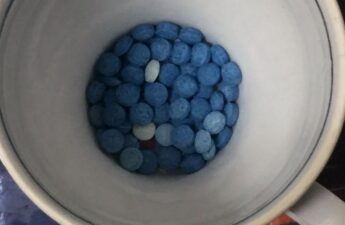
By: Michael Ollove
Stateline
In the bipartisan drive to control prescription drug prices, state and federal lawmakers are taking aim at a new target: pharmacy benefit managers.
PBMs, as the managers are known, are big businesses themselves. The companies negotiate with drug manufacturers on behalf of government health plans and private and employer-based insurance plans.
The deals they strike determine the availability and prices of prescription drugs for more than 266 million Americans.
But there are questions about the extent to which patients benefit from the rebates that pharmacy benefit managers secure from drugmakers. PBMs’ operations are largely hidden from public view and from regulators.
Without transparency, some federal and state officials question whether PBMs are pocketing too much of the money rather than passing the savings on to consumers.
PBMs say they share all the financial gains with health plans. The companies’ national advocacy group estimates that their bargaining prowess will save health plans and consumers $654 billion between 2016 and 2025.
Erin Taylor, a health economist at the RAND Corporation, said the largest PBMs — OptumRx, Express Scripts and CVS Caremark dominate the industry — are “practically oligarchs” with power that rivals that of the drug companies.
“They are the elephants going up against the gorillas, because they have so many covered lives,” Taylor said. “The concern has arisen that the PBMs are getting too big a piece of the pie and contributing to high prices.”
The Trump administration shares that concern. Late last month, the U.S. Department of Health and Human Services proposed a new federal requirement that PBMs pass on to consumers any discounts they receive from drugmakers. The public has until April 8 to submit comments.
State lawmakers also are focusing on PBMs. Legislators in states such as Arizona, Florida, Maine, New Jersey and New York want pharmacy benefit managers to disclose more information to the state about their practices, especially the rebates.
“We need to know how much of the rebate is going to help the consumer at the point of sale, and how much the PBMs are pocketing,” said state Rep. David Santiago, a Florida Republican who filed a transparency bill.
Proposed legislation in Delaware, New Jersey and Texas would prohibit PBMs from pocketing another area of savings: the difference between a patient’s copayment and the cost of a drug, a practice known as “clawbacks.”
Some states also are considering new licensing rules for PBMs, along with state versions of a 2018 federal law prohibiting pharmacy gag rules, which restrict pharmacists from informing patients about cheaper drug alternatives.
But the federal proposal on discounts, which would apply to Medicare, the health plan for seniors, and the managed care portion of Medicaid, the federal-state health plan for the poor, likely would have a far greater impact than the state ones.
In unveiling the proposal, HHS Secretary Alex Azar said it “has the potential to be the most significant change in how Americans’ drugs are priced at the pharmacy counter, ever.”
Shawn Bishop, an economist at the Commonwealth Fund, a New York-based foundation focused on health care, agreed that the proposed rule would “shift the dynamic considerably. PBMs would have a different role. They will have to shift their game.”
Bishop said the change might benefit consumers if it prompts drugmakers to lower their list prices. But that’s uncertain, she said.
For their part, drug manufacturers applauded the Trump administration for “taking steps to reform the rebate system to lower patients’ out-of-pocket costs.”
“These types of reforms will especially help patients with chronic diseases, such as diabetes patients who rely on insulin, who are often not benefitting from significant rebates and discounts,” said the CEO of the Pharmaceutical Research and Manufacturers of America (PhRMA), Stephen Ubl, in a statement.
But the pharmacy benefit managers say the proposed rule fails to reckon with the complexity of drug pricing.
“I am sympathetic there is an urgency to addressing high drug costs, but this particular proposal has not been thought through,” said JC Scott, president of the Pharmaceutical Care Management Association, which represents the PBM industry, in an interview with Stateline.
Scott noted that even in its proposed rule, the government estimated that the change would increase premiums in the Medicare drug plan (Part D) by 19 percent in 2020, on average, even as it lowers out-of-pocket costs, especially for people taking multiple medications or expensive specialty drugs.
A well-regarded health policy consultant hired by HHS, Milliman, also modeled estimates based on different assumptions about what the manufacturers would do if the rule were adopted. The firm found the rule could save beneficiaries as much as 4 percent or increase their costs up to 2 percent based on different variations.
According to HHS, the rule would increase government spending by $13.4 billion in 2020 and by nearly $200 billion by 2029.
Using different assumptions, Milliman found that over a 10-year period, the rule could save the federal government as much as $79 billion or increase federal spending as much as $140 billion.
Negotiating Leverage
In the past, health insurance plans negotiated with drug companies directly. PBMs emerged in the 1960s to manage prescription drug plans for insurers, becoming prevalent in the 1980s.
Now, in addition to negotiating with drugmakers for discounts and rebates, the PBMs help insurers decide which drugs to cover. They also contract with pharmacies to distribute the medications and handle payments.
Health plans were happy to outsource an increasingly complex part of the business. And as the PBMs consolidated into a handful of major players over the last two or three years, their power to negotiate prices grew.
The discounts and rebates that pharmacy benefit managers negotiate are based in part on the overall popularity of certain drugs, but also on inducements the PBMs give patients (or their doctors) to choose one medication over another.
PBMs do this by placing drugs in different categories. Depending on the category, or “tier,” patients pay more or less out of pocket. PBMs can steer patients toward one drug rather than another by making it less expensive.
PBMs also can influence patients’ choices by requiring them to get “prior authorization,” or special permission from their health plan, to use certain drugs.
They also can require patients to first try a less expensive medication before being allowed to use the medicine prescribed by their doctors, a practice called “fail first.”
Drugmakers want their medications to be the cheapest and most accessible to patients, and they are willing to pay for that consideration by offering rebates to the PBMs.
In the early years, Bishop said, the PBMs made money from contracts with the health plans. But over time, Bishop said, the PBMs began to keep a portion of the rebates, and those rebates came to account for a bigger percentage of their revenue.
How much they keep and how much they share with health plans and patients is impossible to know: Until now, they haven’t been required to disclose those numbers.
HHS and other critics say that the present system pushes PBMs to give preferential treatment to expensive drugs in return for large rebates. The industry denies that is the case.
The Trump administration’s rule would upend the whole system by classifying the rebates as kickbacks. Under the proposed rule, manufacturers could only provide rebates if the PBMs passed them on to the health plans and by extension, consumers.
The federal rule as proposed would not apply to commercial plans. But Stacie Dusetzina, an expert in pharmaceutical policy at Vanderbilt University Medical Center, said Congress likely would end up applying it to all health plans, because “it would be tricky for the manufacturers to work in one system with rebates and one without.”
Insurance Industry Opposed
Scott, the president of the PBM association, said that, contrary to the Trump administration’s assertions, the industry passes on all the rebates to health plans, including Medicare, and beneficiaries reap the savings.
He pointed to a 2018 study by the consulting firm Oliver Wyman, paid for by his organization, that found that rebates in the Medicare drug plan saved beneficiaries $34.9 billion in premiums between 2014 and 2018.
Eliminating the rebates in 2018, the study said, would have increased premiums for those in the Medicare drug plan by more than half.
His group also cites a 2017 University of Southern California analysis showing that the net profits from 2015 drug sales for PBMs was 2 percent, compared with 3 percent for insurance carriers and 26 percent for manufacturers.
Brian Henry, a spokesman for Express Scripts, a prominent pharmacy benefit manager, said his company passes on all Medicare rebates. Henry said the rebate system benefits health plans and consumers.
Some health insurers also have defended PBMs, arguing that blaming them for high drug prices is unfair when pharmaceutical companies are free to set their prices as high as they want.
“Big Pharma has been working nonstop to deflect attention from outrageously high prices by convincing Americans that health insurance providers and their PBM partners are the problem, acting as so-called ‘middlemen,’” said the president of America’s Health Insurance Plans, Matt Eyles, in a statement.
Stateline, an initiative of The Pew Charitable Trusts.


